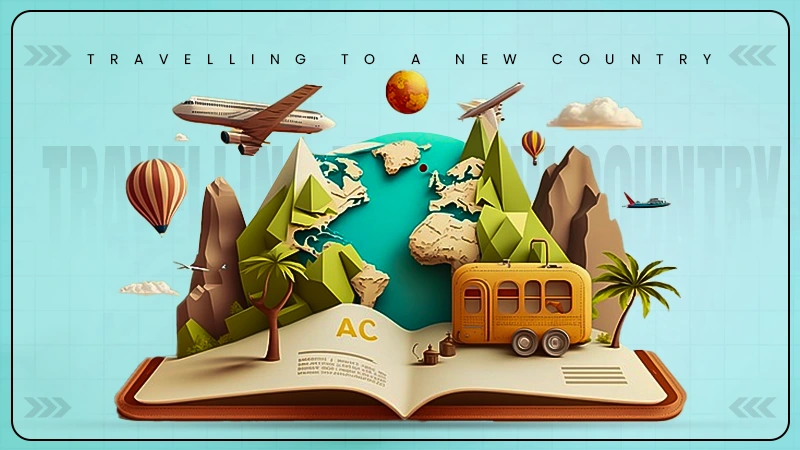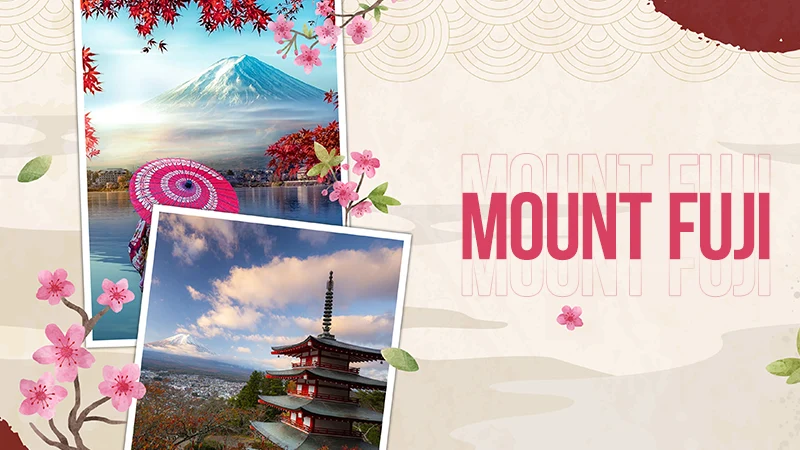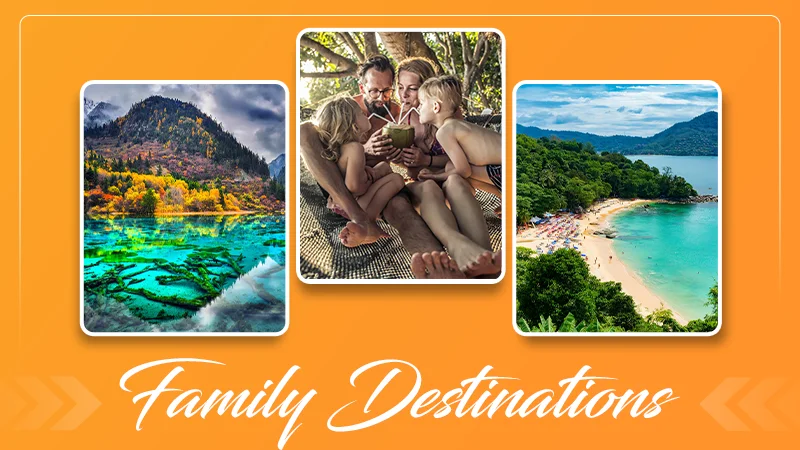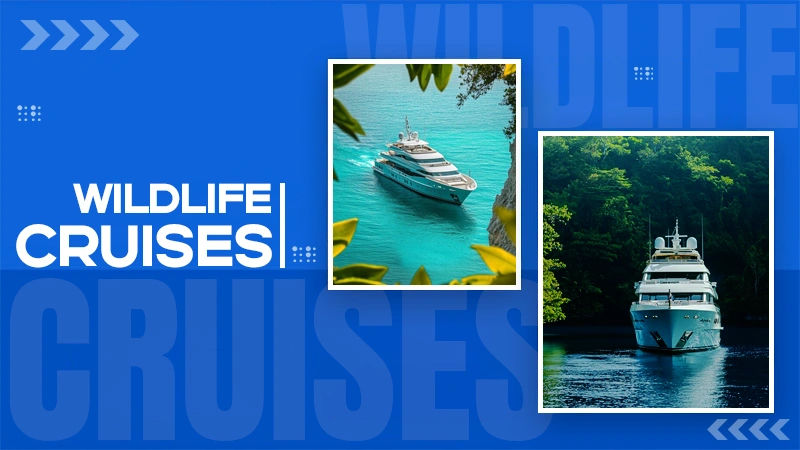
“In every walk with nature, one receives far more than he seeks.” — John Muir
It is said that nature and wildlife are the art of god and some consider it as the best form of therapy. In the current times, many nature lovers and wildlife admirers are keen to witness the untamed beauty of wildlife in their natural environment.
Wildlife viewing cruises provide one such opportunity for them. With the rising demand for nature expeditions, wildlife-viewing cruises are also seeing a surge in demand. It provides nature enthusiasts with opportunities to view animals in their untamed natural habitats and gain a memorable experience.
In this article, we will discuss seven of the best places to survey nature and spot wildlife. So, stay tuned till the end to find out what these seven places are.
1. The Galápagos Islands: A Naturalist’s Paradise

The Galápagos Islands, with their diverse range of wildlife and unique species of animals, are truly a naturalist’s paradise. They are composed of 127 islands, of which 19 are large and 4 are inhabited. In 1959, 97% of the total surface area of these islands was declared a National park.
The history of these islands traces back to the famous naturalist and geologist Charles Darwin, who developed his ‘Theory of Natural Selection’ after getting heavily inspired by the rich biodiversity of these islands.
Iconic Wildlife
These islands offer you an extraordinary experience of witnessing the profuse, fearless, rich, and in proximity to you.
Some famous species to spot in the Galápagos Islands are Galápagos giant tortoise, blue-footed booby, marine iguana, flightless cormorant, Galápagos land iguana, Galápagos, hawk, Galápagos sea lions, and Darwin finches.
Conservation and Sustainability
The Galápagos Islands are home to a wide range of endemic species. A massive surge in tourists has been observed in the past years, while this is a vital part of the local economy, it can also have negative impacts.
Many steps are being taken to ensure sustainability and wildlife conservation here, including rewilding, marine protection, citizen science, collecting wastes, monitoring species, eradicating invasive spaces, etc.
2. Antarctica: The White Continent
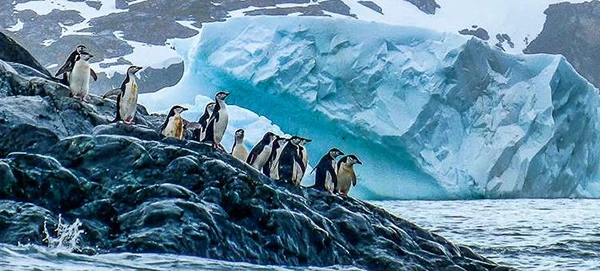
Antarctica, also known as the land of icebergs and penguins, harbors a variety of birds and marine life, including penguins, seals, seabirds, whales, snow petrels, and orcas.
The summer months from November to March are considered the best months to visit Antarctica.
Penguin Colonies and Marine Life
Antarctica is enriched with more than 235 bird and marine species. You can witness a variety of penguin species including Emperor penguins, King penguins, Adélie penguins, and chinstrap penguins living in large penguin colonies known as rookeries.
Around 17000 marine invertebrate species, including Weddell seals, krill, leopard seals, whales, squid, and petrels, belong here.
Expedition Cruises
An expedition cruise to Antarctica offers a unique and extraordinary experience in one of the most beautiful and remote places on Earth.
It can prove to be an educational experience for travelers and an opportunity to witness stunning landscapes and distinctive wildlife species in their natural habitat.
3. The Amazon River: A Biodiversity Hotspot
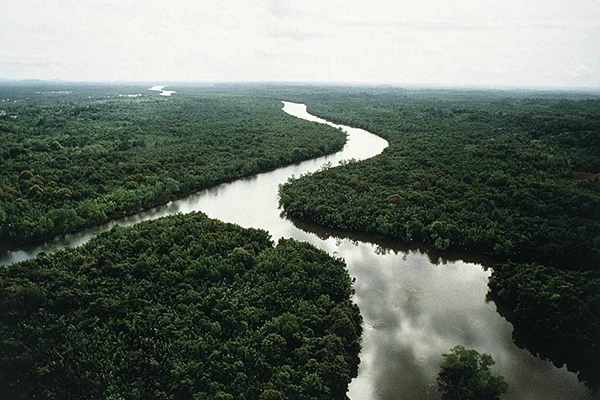
The Amazon River is a part of the Amazon forest and is considered a biodiversity hotspot with over 10% of the world’s known species.
Amazon fosters the greatest known richness of species than any other ecosystem on the Earth. It is still revealing secrets with the discovery of 100 new species every year.
Exotic Flora and Fauna
Amazon shelters millions of exotic species of fauna and fauna including thousands of species of plants, birds, mammals, reptiles, amphibians, fish, and arthropods.
You can witness many endangered species such as Jaguars, Pink river dolphins, giant otters, South American tapir, harpy eagle, and many more.
Cultural Encounters
Not only flora and fauna, but the Amazon River is a central part of lives for many indigenous people that live on its banks. These Indigenous cultures maintain deep spiritual connections and beliefs with the rivers.
4. Africa: Safari at Sea
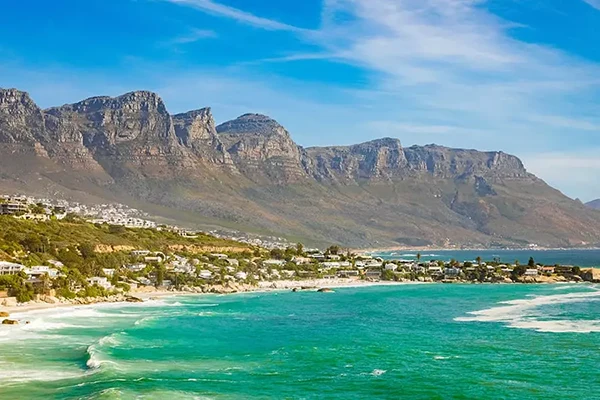
The African wildlife is rich and abundant, ranging from big cats to exotic birds and small mammals. Safari at Sea in Africa will provide you with an astonishing experience of exploring the diverse marine life along Africa’s coastlines.
It allows you to interact with different animals and enjoy various activities such as snorkeling, scuba diving, whale watching, fishing, island hopping, and many more.
The Nile River: Ancient Wonders and Wildlife
The Nile River is renowned for its Nile crocodiles, with an average weight of 1500 pounds and a length of 20 feet, the Nile crocodile is the largest in Africa and one of the largest in the world.
Apart from the Nile crocodile, it also fosters many species of birds and fishes including the African Fish eagle African Jacana, and Nile perch which is a common game fish.
The Nile has provided fresh water, food, transportation, and fertile land for farming, and has been culturally significant to Ancient Egypt.
Chobe River: Elephants and More
The Chobe River, located in the Botswana Chobe National Park, is an anchor for the elephants and the wildlife there. The Botswana Chobe National Park is renowned for its elephants, but you can see various other animals there.
The park and river provide abundant food and water to the elephants, these favorable conditions also attract other animals such as bushbuck, giraffe, blue wildebeest, and lots of hippos.
South African Coastline
The South African coastline harbors a huge variety of fauna and flora. It is a great place to witness the diverse wildlife including the marine big five Southern right whale, cape fur seal, African penguin, Indo-Pacific Bottlenose, and common and humpback Dolphins.
The Southern Africa safari tour market is huge and accounts for approximately 25 % of the African market revenue.

5. The Arctic: Polar Bears and More
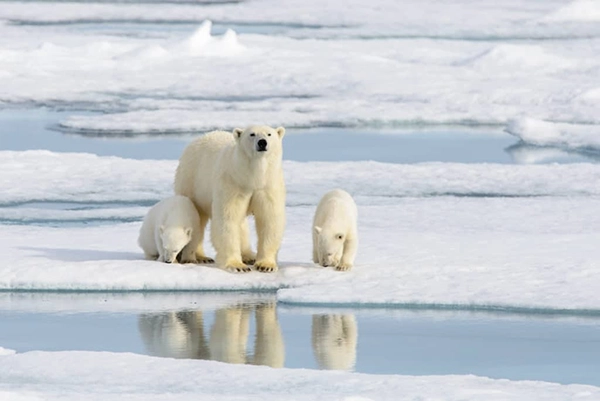
Due to the extreme climate, the variety of species is poor in the Arctic as compared to other warmer places, but it is often rich in individual numbers. Animals like polar bears, arctic foxes, narwhals, beluga whales, walrus, arctic hare, and seals can be observed here.
Polar Bears and Arctic Foxes
Polar bears are known as the kings of the Arctic and play an integral part in maintaining the Arctic’s marine health. They are one of the largest mammals, growing up to a height of 2.7 meters and around 720 kg of weight. They are one of the few carnivores still living in their natural habitats.
Arctic foxes are omnivore land animals that can survive extreme temperatures as low as – 50 degrees Celsius. They are found in many parts of the Arctic and can be easily observed on your trip.
Migratory Birds and Marine Life
The Arctic is home to a variety of bird and marine species, adapted to its extreme climates. Some famous bird species highly likely to be seen in the Arctic include snowy owls, barnacles goose, arctic terns, puffins, and common eider.
Arctic marine life includes Narwhals, beluga whales, polar cod, krill, and walrus.
Both marine animals and arctic birds are interdependent in maintaining the fragile environment of the Arctic.
6. Alaska: A Wilderness Wonderland
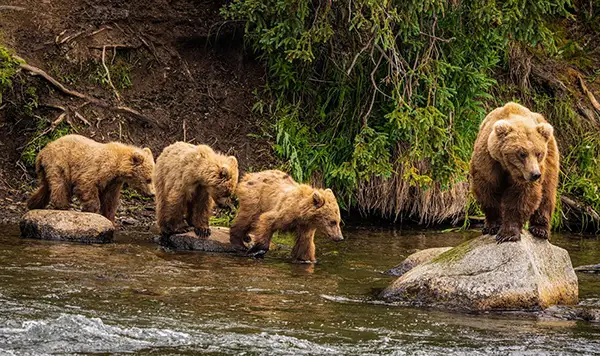
Alaska is famous all around the world for its famous Big 5’s Bear, moose, Dall sheep, caribou, and wolf along with its diverse and unique marine mammals that include orcas, gray whales, and humpback whales.
An Alaska cruise can provide you with a chance to witness the untamed beauty of Alaska’s wildlife and national parks.
Marine Mammals and Bears
Alaska shelters some of the endangered marine mammals including polar bears, whales, sea otters, porpoises, and dolphins. These mammals are considered the indicators of the ocean’s health and balance of the marine ecosystem.
DO YOU KNOW?
Some wildlife cruise operators use a “whale watch” etiquette: When a whale is spotted, boats often turn off their engines and drift, minimizing the disturbances and the chances of whales getting startled. This allows passengers to enjoy a more natural and peaceful encounter with the animals.
Birdwatching and Glaciers
Alaska is a top-tier birding destination, with hundreds of bird species living there. It is a peninsula that extends from North America to Asia, drawing birds from both hemispheres.
The Glaciers Bay National Park in Alaska with approximately 1200 miles of coast offers a golden opportunity to watch birds along with the bonus of chance to see bears and glaciers.
7. Australia and New Zealand: Down Under Adventures
Australia and New Zealand offer many opportunities to interact with wildlife, including-
- Wildlife sanctuaries– Wildlife sanctuaries like Habitat Port Douglas and Bonorong Wildlife Sanctuary allow visitors to cuddle a koala or hand-feed Tasmanian devils.
- Outback – Provides a unique experience to have a champagne breakfast with kangaroos.
- Oceans – You can swim with dolphins in the Bay of Islands, snorkel at the Great Barrier Reef, or kayak among the fur seals in New Zealand’s Fjords.
The Great Barrier Reef: A Marine Wonderland
The Great Barrier Reef offers a great variety of animals to see, including birds, turtles, sharks, and more than 30 species of marine mammals such as dolphins, whales, dugongs, and seals.
You can have an experience of seeing the underwater wildlife up close by snorkeling or scuba diving at the reef.
New Zealand: Kiwi Birds and More
The wildlife in New Zealand ranges from some of the most minuscule creatures to some of the world’s largest.
Here you get to see various species of dolphins and whales, some unique bioluminescent, cave-dwelling glow-worms, and birds like Kiwi, Gannet, Penguin, and kea.
FUN TIDBIT
Cartoonists in the early 1900s started using images of kiwi birds to represent New Zealand as a country. During the First World War, New Zealand soldiers were nicknamed ‘kiwis’. Eventually, the term Kiwi was attributed to all New Zealanders.
Conclusion
The seven destinations mentioned in the article are heaven for nature enthusiasts. These are not just a mere trip or holiday but an opportunity to experience something greater, feed their curiosities, and cultivate a deep understanding of the world beyond the hassle of city life.
Wildlife cruises offer travelers an opportunity to see animals in their natural settings, observe their habits and habitats, and realize how human practices have affected some species. This can be an eye-opening and unforgettable experience for the travelers.



